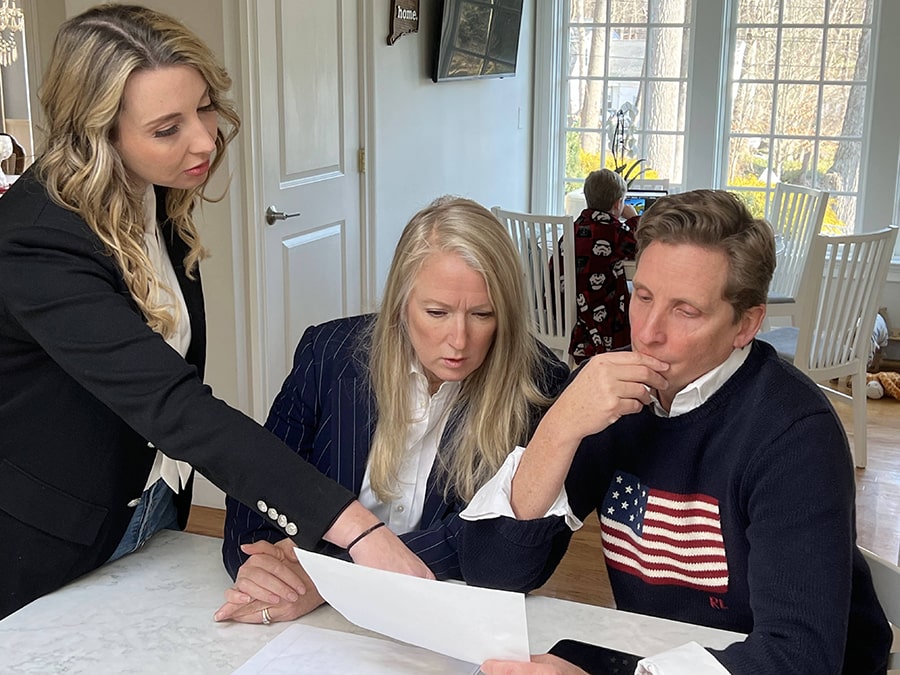 Going into a PPT meeting for your child can feel extremely overwhelming. You are anxious about what the team is going to recommend. Are they going to decrease or take away services? What should I expect to happen? These are very valid feelings and concerns. When you go to a PPT meeting you are sitting in a room with 4+ school staff members all who are “schooling” you on your own child. They are giving reports – as they should! Your child spends over 1,000 hours with them, at school, a year. From my experience, the whole team assembles, finds a place to sit in the PPT room and then someone will escort you into the room. You walk in, everyone has lap tops or binders in front of them. It is intimidating.
Going into a PPT meeting for your child can feel extremely overwhelming. You are anxious about what the team is going to recommend. Are they going to decrease or take away services? What should I expect to happen? These are very valid feelings and concerns. When you go to a PPT meeting you are sitting in a room with 4+ school staff members all who are “schooling” you on your own child. They are giving reports – as they should! Your child spends over 1,000 hours with them, at school, a year. From my experience, the whole team assembles, finds a place to sit in the PPT room and then someone will escort you into the room. You walk in, everyone has lap tops or binders in front of them. It is intimidating.
Side Note: From my experience in working for a school district, this not meant to be a tactic of intimidation, it is the school trying to get organized — meaning — staff members go straight from teaching your child and have to gather materials and run to the conference room. They all sit down and the bring the parents in when they are “ready” so that the parent is not waiting for each member to enter the room.
Using the side note, come into the room positive! Break the tension with a sledge hammer. I know it is hard in the moment to do this but after the tips you will read below, you will be more confident to do so!
The Team Did Their Homework – You Should Too!
Remember what I said, the team sees your child for over 1,000 hours a year. They have data (or they should have… that is another blog post in the making) that they 1. should share with you ahead of time and 2. should be able to speak to during the meeting. So where is your homework?
Prior to the meeting you should:
ASK for all the documents that will be shared at the PPT. This includes (but is not limited to) drafted goals and objectives, teacher reports, any assessments, school based assessment reports, the invitation … and so on…
You are going to review the goals and objectives and documents so that you can prepare for the next step – a T chart…
What is a T chart?

Create a T chart. Draw a line down the center of a piece of paper and draw a cross line about 3 inches down to create a letter T. On one side you are going to write down all of the things that are going well. On the other side you are going to write down concerns that you are seeing. You are going to bring this T Chart with you to the PPT to set as a guide for your questions and conversation with the PPT team. As each item is talked about you can cross it off the list or put a checkmark next to it. This will ensure that you have all you questions answered. After you complete this step you are going to prepare a parent statement that you will send to the time prior to the meeting.
What is a parent statement?
A parent statement is a statement that you will prepare ahead of the meeting and send to the team in advance. In this statement you are going to encompass successes but very clearly outline your concerns. You will ask that your parent statement be added to the IEP in the “parent input” section. But Danielle, why do I want to send this ahead of time? You want the team to be prepared to answer questions and you want it to be on record that you concerns were not only shared at the PPT but you even sent it to the team ahead of time.
A parent statement should be a summary of what you are seeing and updates of what your child is doing at home/after school. The good, the bad, the everything. Limit it to no more than 1-2 minutes as you will read this out loud in the meeting. Be sure that you are specific in your concerns.
Go in confident that you are prepared but keep your collaborative heart open. Balance what you are hearing and what you are feeling (I think that is the hardest part). And remember to record your meeting so that you can meaningfully participate in teh meeting.
Read about this topic and more in my book The Special Education Process: A Parent’s Guide by A Parent available on Amazon!
